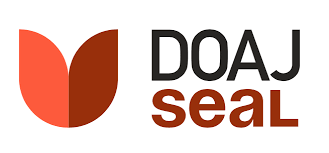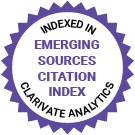JMIR Research Protocols
Protocols, grant proposals, registered reports (RR1)
Editor-in-Chief:
Amy Schwartz, MSc, Ph.D., Scientific Editor at JMIR Publications, Ontario, Canada
Impact Factor 1.4 CiteScore 2.4
Recent Articles

In Mali, a lack of qualified human resources in primary health care and sexual and reproductive health and rights (SRHR) is one of the greatest barriers to the population’s access to standard health services. Frontline professional training must be strengthened to respond to the needs of the population, particularly those of women and girls. Training must be conducted using an interdisciplinary and adapted approach to promote gender equality.

Adolescent girls and young women constitute a priority population disproportionately affected by HIV, accounting for 25% of annual HIV incidence among people older than 15 years in Kenya. Although oral preexposure prophylaxis (PrEP) is effective in reducing HIV acquisition, its protective benefit has been limited among adolescent girls and young women in sub-Saharan Africa because of low uptake, adherence, and persistence. Intimate partner violence (IPV) and relationship power inequities are widespread among adolescent girls and young women and contribute to higher HIV incidence and lower PrEP use. Interventions are needed to support sustained PrEP use among adolescent girls and young women by addressing IPV and relationship dynamics.


Glaucoma is the leading cause of irreversible blindness worldwide, causing continuous and progressively worsening damage to visual function, which leads to vision loss. Optic nerve protection is an important treatment for glaucoma with controlled intraocular pressure (GPCI), but to date, there is no universally accepted effective optic nerve protection agent. Acupuncture can protect the optic nerve by increasing blood flow to the eye. However, fear of pain or the limitations of treatment place and time lead to poor patient compliance. Press-needle therapy is a characteristic of traditional Chinese medicine (TCM) external treatment methods; its safety is high, the effect is fast and lasting, it is easy to conduct, and it has high patient compliance.

The hospital experience is often marked by fear and pain, particularly for children undergoing medical procedures. Sedation is commonly used to alleviate patient anxiety, but it poses additional health risks. Caregivers, usually the parents, also experience emotional distress during the child’s hospital stay, which can further exacerbate the child’s anxiety and pain. While various interventions exist to ease patient distress, few consider the emotional well-being of caregivers.

Norgestimate (NGM) is a progestin with negligible androgenic activity that is available in combination with ethinyl estradiol (EE) as a monophasic combined oral contraceptive (COC). It has been more than 30 years since a clinical study evaluated the effects of monophasic NGM/EE on menstrual cycle characteristics in healthy women, and in the interim, there has been growing recognition that clinical trials of contraceptives should evaluate a wide range of potential positive and negative impacts for users.

Diabetes distress (DD) is a common emotional response to living with diabetes. If not addressed, DD can have negative impacts on diabetes management, including the progression to mental health conditions such as depression and anxiety. Routine screening and treatment for DD is recommended, with primary care being an ideal setting given that the majority of people with diabetes receive their diabetes care from primary care providers. However, consistent screening of DD does not routinely occur in primary care settings. Research is needed to understand how to effectively and feasibly integrate DD screening and treatment into routine diabetes care.

The Canadian long-term care (LTC) workforce cares for increasingly complex residents. With greater care needs come greater demands. Despite this, LTC staffing and resources are largely unchanged and underresearched over the last decade. The Atlantic provinces are home to the oldest population in Canada, indicating a high need for LTC. The health and well-being of the LTC workforce are critical components of care quality, yet only in Western Canada are such data routinely and systematically collected. Translating Research in Elder Care is a 2-decade research program studying the LTC work environment and has found strong links between the working conditions of LTC staff and resident outcomes. We draw upon their success to generate the evidence needed to understand, support, and manage the LTC workforce in Canada’s four Atlantic provinces.

In India, heavy menstrual bleeding or menorrhagia (Raktapradara) constitutes about 15% to 20% of all gynecological admissions in an institution. Of these, 43% of patients are aged 20-40 years. This condition is worsening because of the high prevalence of anemia among Indian women. Menorrhagia can have a significant impact on women’s lives. Medical treatment is usually the first choice in excessive bleeding, but it reduces menstrual blood loss by only 50%, and up to 50% of women undergo surgical treatment within 5 years. However, none of these treatments proved their definite efficacy in spite of the high price and side effects. This condition presents a major financial burden on health care services. In Ayurveda, encouraging work has been done on the compound drug Ashokarishta, and the drug Trinakantamani pishti is indicated in Ayurvedic classics and the Ayurvedic Formulary of India. Also, these medicines have been used in Ayurvedic practice for a long time. However, no clinical trial has been carried out on these formulations.

To improve the performance of health care institutions, reduce overmedication, and minimize the waste of medical resources, China is committed to implementing a clinical pathway management model. This study aims to standardize nursing practices, foster clinical thinking in nurses, and promote patient recovery.

Youth and families play an indispensable role in health research, given their unique lived experiences and expertise. Aligning research with patients’ needs, values, and preferences can significantly enhance its relevance and impact; however, recent research has highlighted various challenges and risks associated with youth and family engagement in health research. These challenges encompass the perils of tokenism, power imbalances and dynamics, questioning the motives behind engagement, and limited accessibility to patient-friendly training for patient partners, as well as inadequate training on patient engagement for researchers and the absence of equitable engagement tools. To address these risks and challenges, different patient engagement models, theories, frameworks, and guiding principles have been developed and adopted; to date, however, their transferability to youth- and family-specific engagement in research has been limited.

Low-dose computed tomography (LDCT) screening is promising for the early detection of lung cancer (LC) and the reduction of LC-related mortality. Despite the implementation of LC screening programs worldwide, recruitment is challenging. While recruitment for LC screening is based on physician referrals and mass advertising, novel recruitment strategies are needed to improve the enrollment of high-risk individuals into LC screening.
Preprints Open for Peer-Review
Open Peer Review Period:
-













